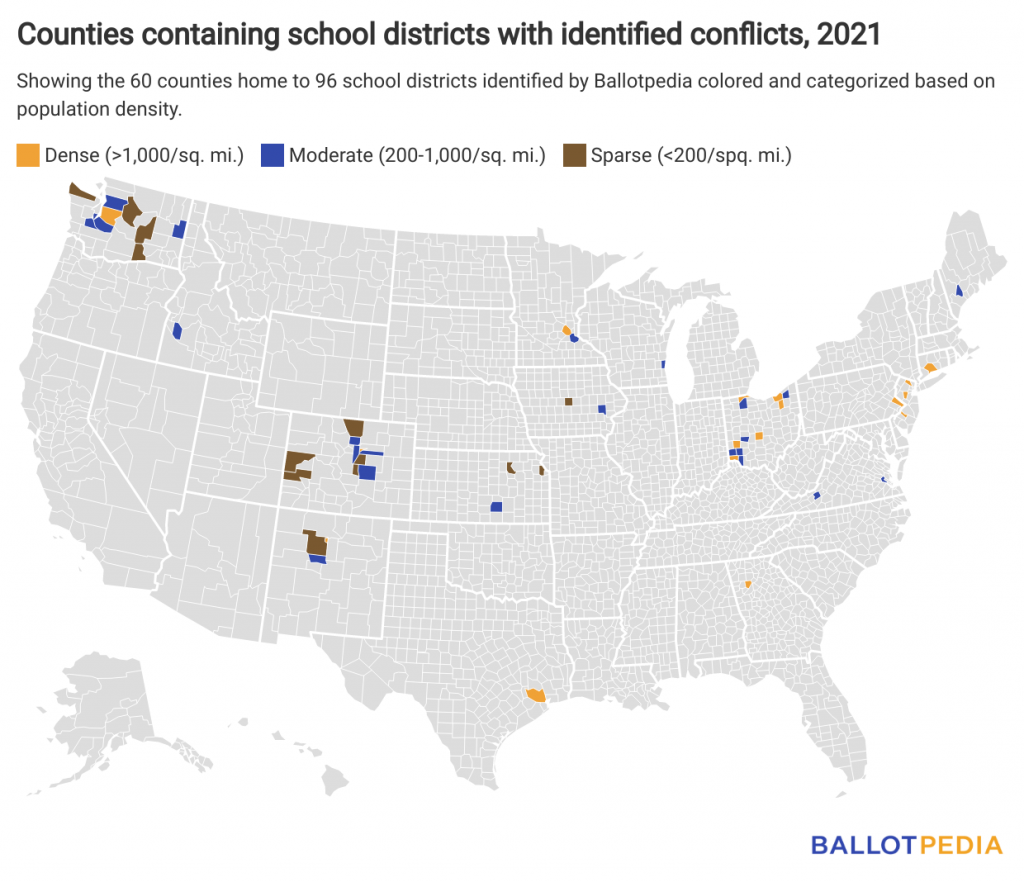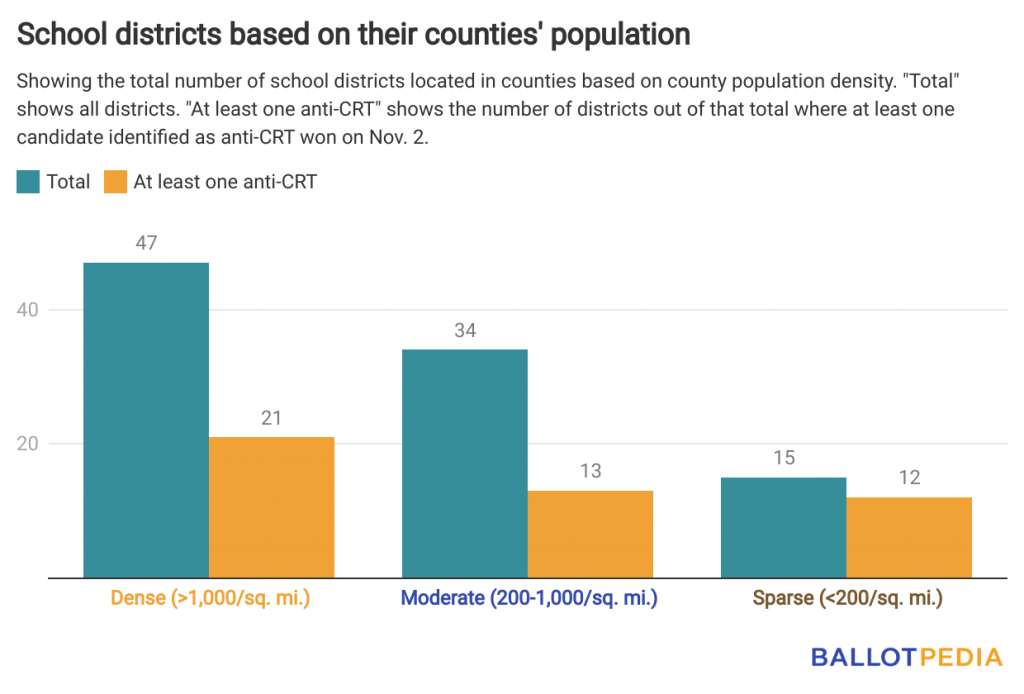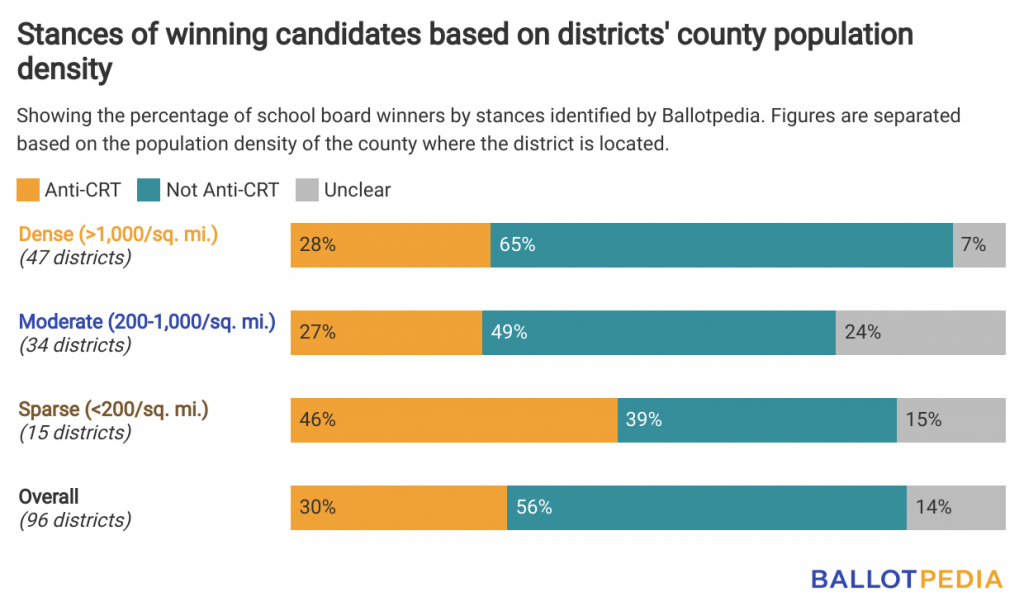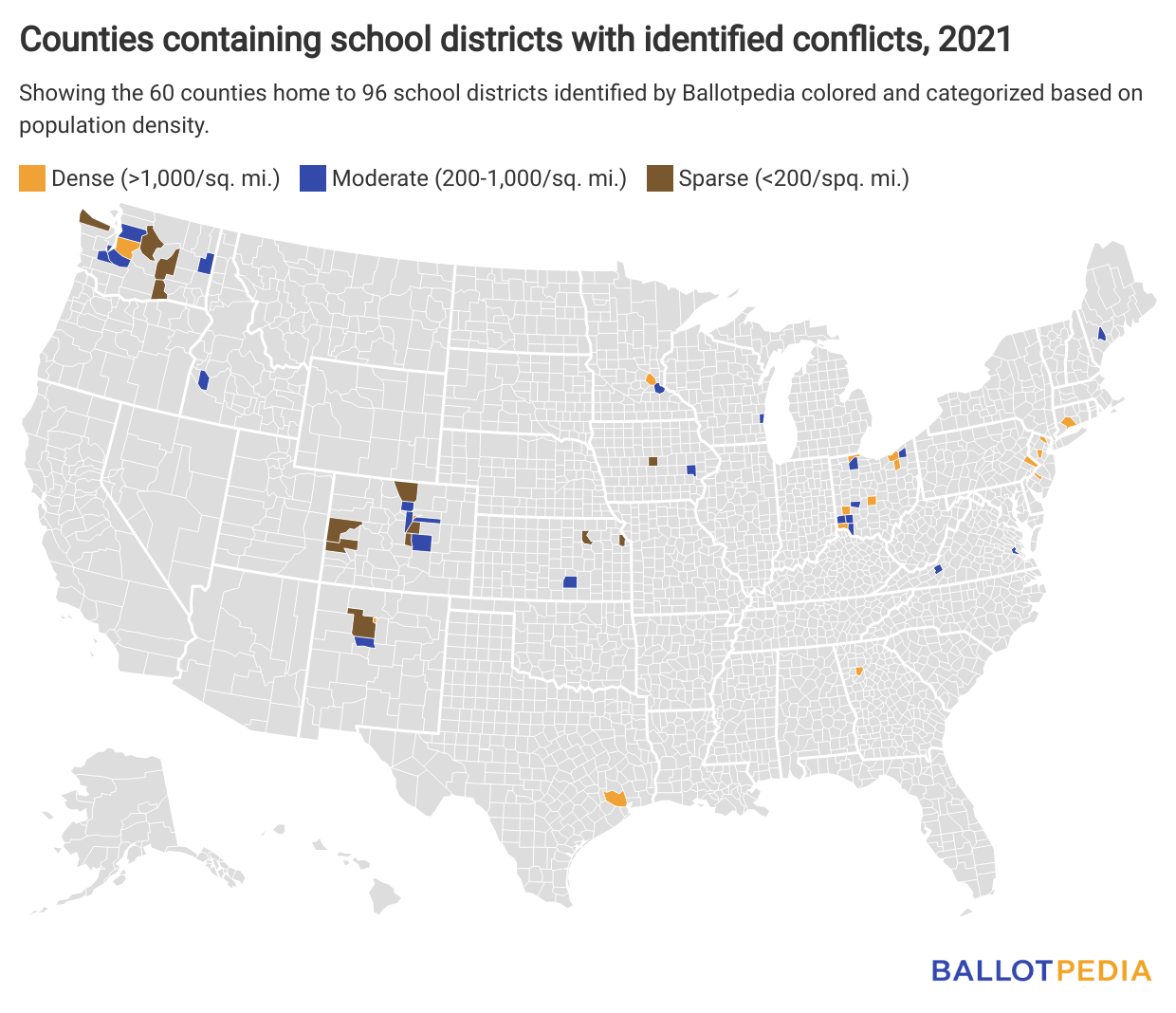Ballotpedia tracked 96 school districts across 16 states that held elections on Nov. 2 where candidates took a stance on race in education, coronavirus responses, or sex and gender in schools. There were 310 seats up for election, and all but six have been called.
In each of the called races, Ballotpedia researched whether the winner incorporated a stance opposing any of the identified issues listed above. As a shorthand, we created these three categories: anti-CRT, not anti-CRT, and unclear.
Forty-seven of the 96 counties were located in dense counties, meaning those with population densities greater than 1,000 people per square mile. Thirty-four districts were located in moderate counties, with densities between 200 and 1,000 people per square mile, and 15 were located in sparse counties with densities less than 200 people per square mile.

Of the 47 school districts located in densely-populated counties, 21 (45%) elected at least one anti-CRT candidate on Nov. 2 compared to 13 of the 34 districts located in moderately-dense counties (38%). Twelve of the 15 districts located in sparsely-populated counties (80%) elected at least one anti-CRT candidate.

A further breakdown shows that, in districts located in dense and moderate counties, just under 30% of the winning candidates were identified as anti-CRT, roughly similar to overall trends. In the 15 districts located in rural counties, 21 winners (46%) were identified as anti-CRT and 18 (39%) as not anti-CRT.

Additional reading:


